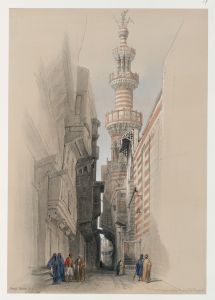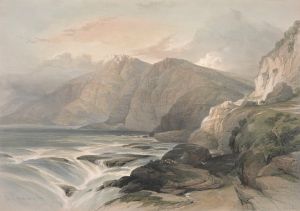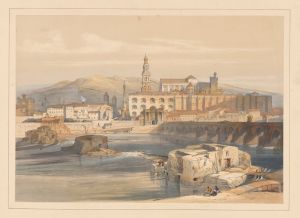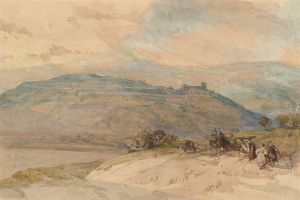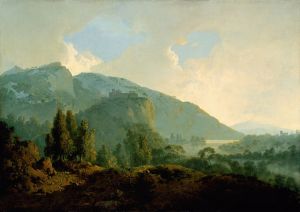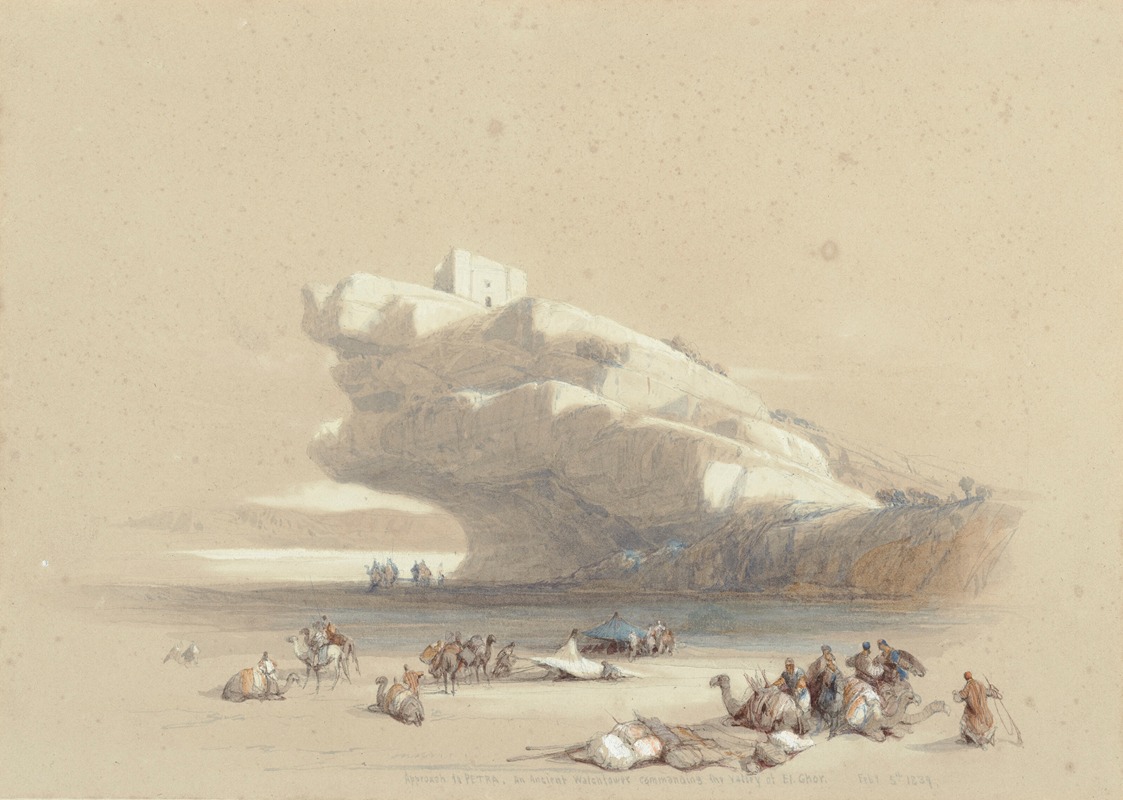
The approach to Petra, looking up to an ancient watchtower
A hand-painted replica of David Roberts’s masterpiece The approach to Petra, looking up to an ancient watchtower, meticulously crafted by professional artists to capture the true essence of the original. Each piece is created with museum-quality canvas and rare mineral pigments, carefully painted by experienced artists with delicate brushstrokes and rich, layered colors to perfectly recreate the texture of the original artwork. Unlike machine-printed reproductions, this hand-painted version brings the painting to life, infused with the artist’s emotions and skill in every stroke. Whether for personal collection or home decoration, it instantly elevates the artistic atmosphere of any space.
David Roberts' painting The Approach to Petra, Looking Up to an Ancient Watchtower is a notable work by the Scottish artist, who is renowned for his detailed and evocative depictions of Middle Eastern and North African landscapes and architecture. This particular artwork is part of Roberts' extensive series of lithographs and paintings created during his travels in the region in the 1830s and 1840s. Roberts' works are celebrated for their historical and artistic significance, as they provide a visual record of many sites before modern development and restoration efforts.
David Roberts (1796–1864) was one of the first European artists to travel extensively in the Middle East, including Egypt, the Levant, and the Arabian Peninsula. His journey to Petra, located in present-day Jordan, was part of his broader exploration of the region in 1839. Petra, an ancient city carved into rose-red sandstone cliffs, was the capital of the Nabataean Kingdom and is now a UNESCO World Heritage Site. The city was largely unknown to Europeans until its rediscovery by Swiss explorer Johann Ludwig Burckhardt in 1812.
The painting captures the dramatic approach to Petra, emphasizing the rugged terrain and the imposing natural and man-made features of the site. The "ancient watchtower" referenced in the title is one of the many architectural elements that reflect the Nabataeans' advanced engineering and strategic use of the landscape. Roberts' composition highlights the grandeur of the setting, with towering cliffs and the remnants of ancient structures, evoking a sense of awe and mystery.
Roberts' works were widely disseminated through lithographs produced by Louis Haghe, a prominent lithographer of the time. These lithographs were published in the multi-volume series The Holy Land, Syria, Idumea, Arabia, Egypt, and Nubia (1842–1849), which brought Roberts' images to a broad European audience. The series played a significant role in shaping Western perceptions of the Middle East during the 19th century.
Roberts' artistic approach combined meticulous attention to detail with a romantic sensibility, capturing both the physical reality and the atmospheric qualities of the landscapes he encountered. His works remain valuable not only as art but also as historical documents, offering insights into the appearance of these sites in the 19th century.
The exact date of the creation of The Approach to Petra, Looking Up to an Ancient Watchtower is not specified, but it is consistent with the body of work Roberts produced following his 1839 journey. The painting and its associated lithographs continue to be appreciated for their artistic merit and their contribution to the documentation of historical sites.





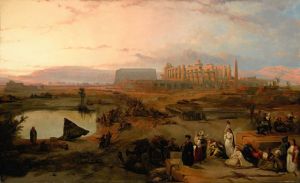
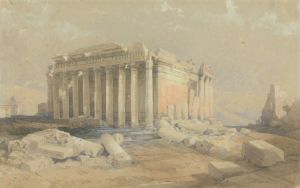
![Front elevation of the Great Temple of Aboosimble [sic]. Nubia.](/imgs/217485/s/david-roberts-front-elevation-of-the-great-temple-of-aboosimble-sic-nubia-c5cdea0a.jpg)
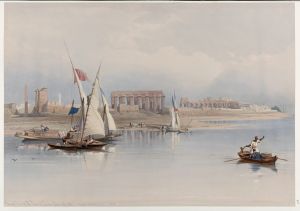
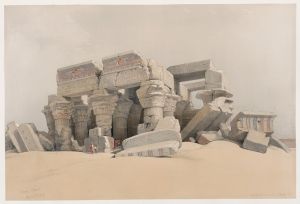
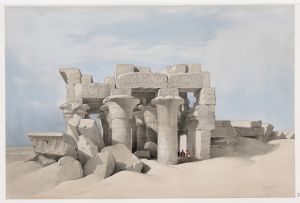
![Lateral view of the temple called the Typhonæum, at Dendera [Dandara].](/imgs/217507/s/david-roberts-lateral-view-of-the-temple-called-the-typhonaeum-at-dendera-dandara-b378b9d7.jpg)
